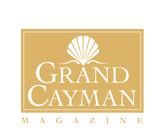Since the late 1960s the Cayman Islands has been known as an offshore banking hub. Even today the islands are still classed as the seventh or eighth largest banking center in the world in terms of the value of its respective cross-border banking assets and liabilities of about US$1 trillion.
However, these figures are down more than 50 percent from their peak and the high ranking as an offshore banking center does not reflect the continuous decline from nearly 600 registered banks in the late 1990s to 150 banks today.
The focus on Cayman as a banking location also obscures how the jurisdiction over the decades expanded its financial services offering through forward-looking regulations.
In the 1970s and 1980s Cayman developed a regulatory framework that enabled captive insurance, especially in the field of medical malpractice self-insurance by large U.S. hospital chains.
This was followed in the 1990s by a mutual funds law that captured a large share of the world’s investment funds business in the form of hedge fund and private equity fund structures that benefit from Cayman’s offshore status to attract international investors.
Jude Scott, the CEO of Cayman Finance, an industry association that represents Cayman’s financial services industry, says that Cayman throughout its history had a sense of being a global citizen that led the country to pursue new opportunities not just regionally but worldwide.
This required local businesses to focus on a high service quality and to be constantly innovative.
“The original building block of that was the banking industry. From the banking industry we built the captive insurance industry, the trust and private client business, the capital markets business, hedge funds,” Scott says. “We are now building out the governance offering for the jurisdiction.”
Today, Cayman Finance represents 15 industry associations covering investment funds, asset management, banking, insurance, reinsurance, capital markets, fiduciary services and many more.
The financial industry has grown to such a size that it outweighs considerably the contribution tourism makes to the economy and government revenues.
If related industries like legal and accounting services are considered, the finance industry directly contributed more than half, 52 percent, to Cayman’s gross domestic product of $2.6 billion in 2015.
For government, the industry is an indispensable source of revenue with nearly half of all government funding (42 percent) coming from financial services contributions. This does not include items like stamp duties paid by individual businesses or people in the industry, which would bring the figures even higher.
Minister of Financial Services Tara Rivers noted recently that this is the same revenue that is needed to pay for government services.
“There is absolutely no doubt that the financial services industry is critical to the socioeconomic welfare of the Cayman Islands,” she said. “It is critical for our ability to fund schools, to fund education, to fund healthcare, to fund social services, to fund road infrastructure, environmental conservation, etc.”
The financial industry’s comparatively smaller footprint in the labor market partially explains why locally the finance industry is not as visible as tourism-related activities.
Still, a total of 7,669 people in Cayman work in financial services, accounting for more than 18.3 percent of employment.
Crucially, far more than half of these jobs, 62 percent, are held by Caymanians. This is significantly higher than the 47 percent share of Caymanians in the labor force as a whole, as indicated by the latest available Labor Force Survey carried out by Cayman’s Economics and Statistics Office in the first quarter of 2017.
The statistics stand in stark contrast to the perception by the public which, according to an informal survey conducted several years ago by Cayman Finance, incorrectly believes that the tourism sector makes a bigger contribution to the economy and government.
Cayman Finance undertook its own research into how much government spends on each industry and the return it receives from work permit and license fees and other forms of indirect taxation.
“We were able to show government that they spend twice as much on tourism as they do on financial services,” Scott says. “And for every dollar they spend on financial services, they roughly receive around $18 from financial services. Comparably with tourism, they receive less than $2 in revenue.”
There are several other reasons why the vital role of the industry for the economy, the labor market and government revenue is not well understood by the general public, says Scott.
Because the industry is using intellect to add value, its work is not as tangible or visible as tourism with tourists spending time in hotels, restaurants, and at popular sights on the islands.
Given that much of the work is done with counterparties around the world, it is also not directly impacting “the person on the street.”
Other reasons are statistical. The international categories used to aggregate economic data do not correctly reflect the size of the industry. For instance, lawyers and accountants are classed as professional rather than financial services even though almost all of their work is related to the finance industry.

Financial education programs
The difference between the public perception and available job opportunities in the industry has prompted Cayman Finance to focus on its visibility and the education of young people.
Because there is no curriculum in the school system that discusses the various elements of the industry, Scott says, students have little knowledge about financial services.
In addition to what financial firms are doing in terms of scholarships and training programs, Cayman Finance, therefore, started a student education work experience program to expose talented young Caymanians to the industry.
The program includes workshops that explain the industry, its products, and services and how they add value to clients. It also deals with some of the myths surrounding Cayman, explaining why it is not a “tax haven” or a “secrecy jurisdiction,” Scott says.
Very importantly, it helps students understand the broad and diverse careers that are available in the industry, including those that do not require traditional law, accounting, and finance degrees.
Industry practitioners deliver the workshops over a ten-week period. During that time mentors are paired with students for a weekly session to answer questions, explain why they chose their career and introduce students to other areas they are interested in.
The program finishes with a one-month work experience program in the summer, and students who complete the program receive a $1,000 stipend.
The Cayman Finance chief executive says the program “has been amazingly successful.”
Government contributes about $50,000 to the program, but the contribution from the industry is much larger.
Through the first three years, 188 students completed the work experience and workshops of the program. A total of 193 mentors participated and 32 member firms provided mentors and work experience placements. In addition, 92 volunteer facilitators held 81 workshops as part of the program.
“When we look at the cost in terms of the time value of the volunteers and the out of pocket costs the program is valued at over $1 million a year,” Scott notes.

The role of financial services
Familiarizing young people with the industry from an early age is important to supply the industry with one of its key requirements: Talent.
The participation of Caymanians in the industry is also important for the development of the islands as a whole.
One of the key differentiators between the Cayman Islands and neighboring countries and territories in the Caribbean has been the strong focus on financial services. Without the industry Cayman would arguably be less prosperous.
In 1960, when the Cayman economy still largely relied on seamen’s remittances, fishing, agriculture, shipbuilding and hand crafts, the economic output per person was slightly higher than Jamaica’s, about equal to the Turks and Caicos Islands, but it was only one-third of the relative economic strength of the United Kingdom and one-seventh of the United States.
Today, Cayman’s economic power, on a per person basis, matches the U.S. and considerably exceeds that of the former motherland, the U.K., let alone that of other Caribbean nations and territories.
It is difficult to imagine what Cayman would look like without financial services.
Texas A&M University law professor Andrew Morriss, an expert in regulatory competition, has written a paper on the development of Cayman as a financial center since the 1960s.
He believes, without the finance industry, Cayman would look a lot like the Turks and Caicos Islands.
“Both were about at the same level of development around 1970, and the big difference is that Cayman’s financial industry took off and Turks’ didn’t, leaving it with tourism,” he says.
Documents from the British Archives from the 1960s and 1970s show that officials at the time did not see many alternative activities for the Overseas Territories other than offshore finance and tourism, Morriss adds.
To survive in the changing landscape of international finance for as long as it has and to evolve as it has, Cayman had to remain continuously innovative and responsive to client demand and regulatory pressures.
Morriss ascribes Cayman’s success to the collaborative approach followed by legislators and financial professionals in devising laws and regulations that meet the needs of both effective governance and the market place. In addition, Caymanians understood that their comparative advantage relied on a stable legal environment, and they realized that their success is fragile, he notes.
“There is no question that Caymanians today live better lives than their grandparents due to Cayman’s success in financial services,” Morriss writes.
Whether this can continue is open for debate, but Cayman Finance’s Scott is not concerned by the threats from technological to regulatory change to the small offshore financial center.
Cayman, he says, provides an efficient, trusted, neutral platform for legitimate parties who have capital and financing to connect with parties who need capital and financing around the world.
“When we look at capital and financing being needed in the world more now than ever, we have continued to evolve our product offering, our global standards, transparency, and cooperation to make sure that we are meeting the needs of the world and upholding the standards,” Scott says.
“We provide a very valuable role, and there will continue to be a place for us.”


















